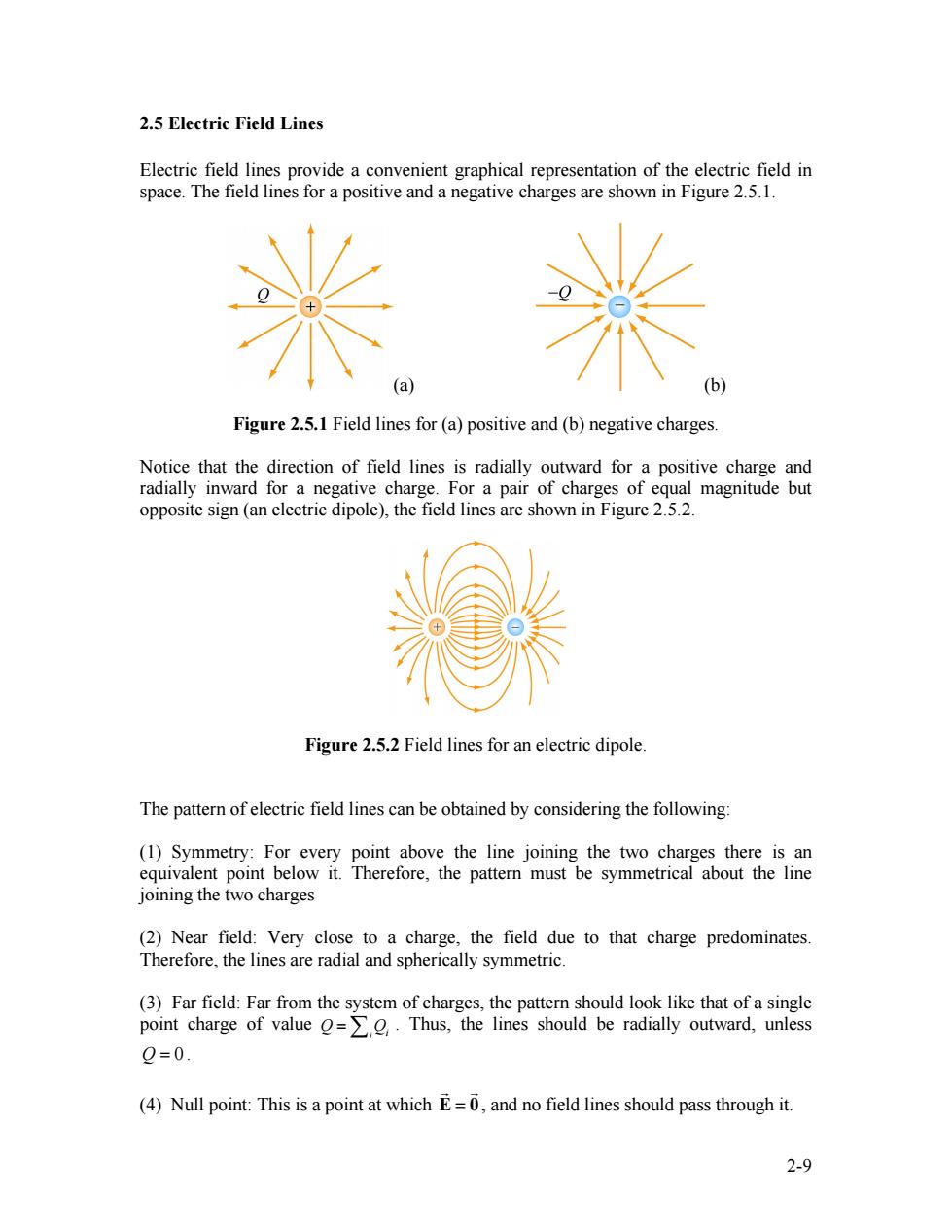正在加载图片...

2.5 Electric Field Lines Electric field lines provide a convenient graphical representation of the electric field in space.The field lines for a positive and a negative charges are shown in Figure 2.5.1. (b) Figure 2.5.1 Field lines for (a)positive and (b)negative charges. Notice that the direction of field lines is radially outward for a positive charge and radially inward for a negative charge.For a pair of charges of equal magnitude but opposite sign(an electric dipole),the field lines are shown in Figure 2.5.2. Figure 2.5.2 Field lines for an electric dipole The pattern of electric field lines can be obtained by considering the following: (1)Symmetry:For every point above the line joining the two charges there is an equivalent point below it.Therefore,the pattern must be symmetrical about the line joining the two charges (2)Near field:Very close to a charge,the field due to that charge predominates. Therefore,the lines are radial and spherically symmetric. (3)Far field:Far from the system of charges,the pattern should look like that of a single point charge of value =Thus,the lines should be radially outward,unless Q=0. (4)Null point:This is a point at which E=0,and no field lines should pass through it. 2-92.5 Electric Field Lines Electric field lines provide a convenient graphical representation of the electric field in space. The field lines for a positive and a negative charges are shown in Figure 2.5.1. (a) (b) Figure 2.5.1 Field lines for (a) positive and (b) negative charges. Notice that the direction of field lines is radially outward for a positive charge and radially inward for a negative charge. For a pair of charges of equal magnitude but opposite sign (an electric dipole), the field lines are shown in Figure 2.5.2. Figure 2.5.2 Field lines for an electric dipole. The pattern of electric field lines can be obtained by considering the following: (1) Symmetry: For every point above the line joining the two charges there is an equivalent point below it. Therefore, the pattern must be symmetrical about the line joining the two charges (2) Near field: Very close to a charge, the field due to that charge predominates. Therefore, the lines are radial and spherically symmetric. (3) Far field: Far from the system of charges, the pattern should look like that of a single point charge of value . Thus, the lines should be radially outward, unless . i i Q = ∑ Q Q = 0 (4) Null point: This is a point at which E = 0 G G , and no field lines should pass through it. 2-9